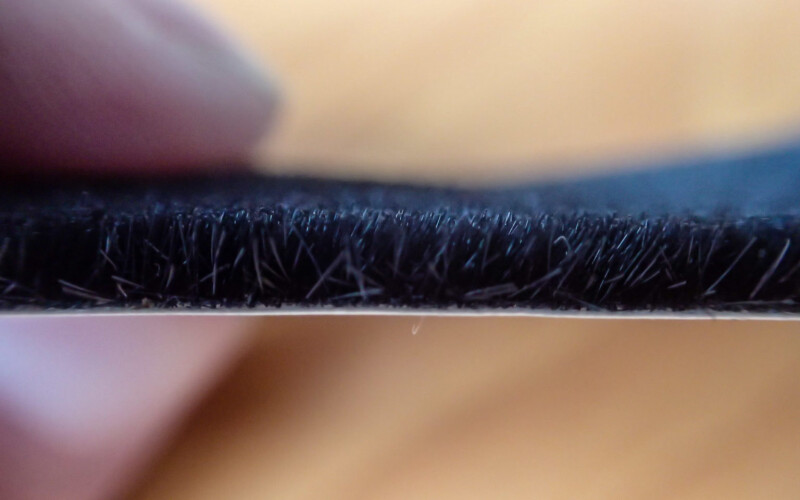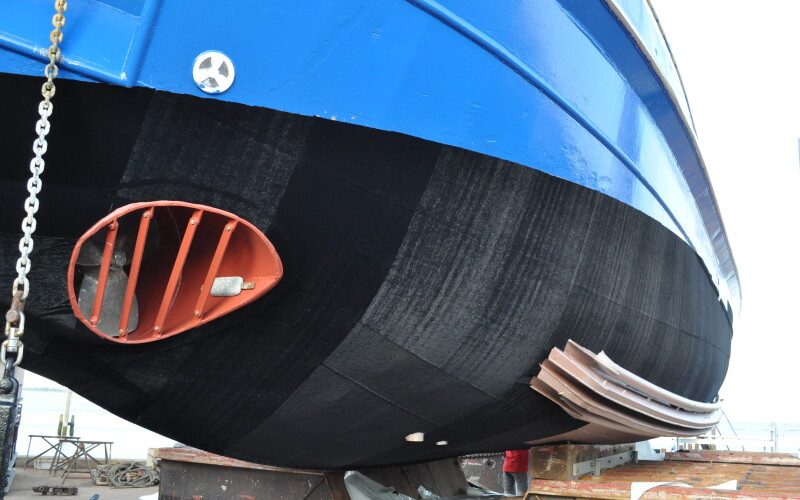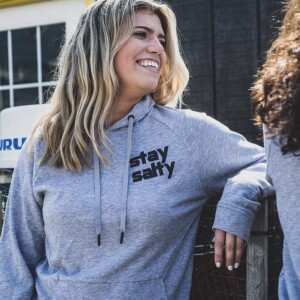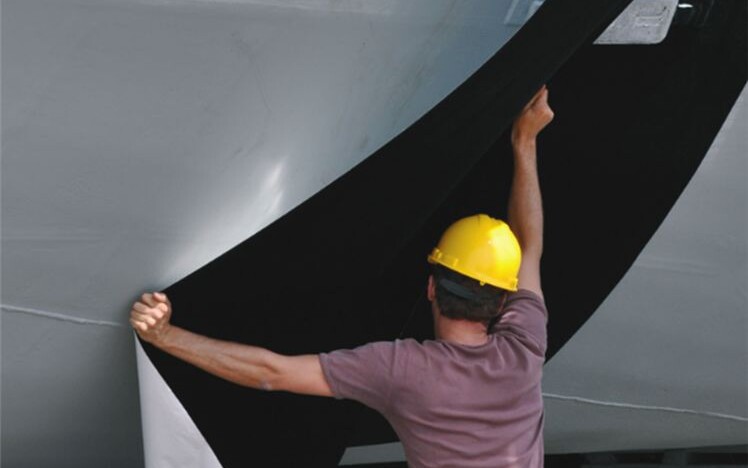Any hull submerged below the ocean’s surface is bound to become a home for marine growth. Over the years, release paint has traditionally been used on the bottom of boats. However, European-based Finsulate offers a non-toxic solution that prevents marine life such as algae, barnacles, muscles, and other organisms from being cultivated on vessels and other marine structures. The company presents an eco-friendly foul-release wrap for boats and floating marine equipment.
The company was founded in Hoofddorp, the Netherlands, by Dr. Rik Breur, who was inspired to create the product from the hours he had spent scuba diving. Breur wanted to create a greener option to the traditional toxic anti-fouling bottom paints. The material he produced was a wrap, with fibrous material on one side and eco-friendly adhesive on the other, similar to a vinyl decal material or car wrap.

The film surface consists of fine nanotech fibers that create zero surface energy, making it tougher for marine organisms to get between them and adhere to the hull. The film provides a protective barrier to maintain a foul-release surface.
One of the most common questions from boat owners is how their hull will perform underway with the fibers. Finsulate offers different grades for different vessels, and the small fibers on any option will flow with the boat without creating extra drag.
Rustler Yachts, Falmouth, England, undertook the first trial application, promising to apply Finsulate products to their entire fleet should the trial prove successful. Some years later, Bernard Hidier, co-founder of Finsulate USA, brought the product to the States in hopes of making a splash in communities where the maritime industry plays a big role. Hidier hopes to bring a greener product to the working commercial hulls that spend most or all their time in the water.
“It’s an easy product to install, and the only routine maintenance would include power washing to prevent any marine growth. It eliminates the need for repainting altogether," Hidier told MaineBiz.
Bottom paint has significant drawbacks, such as the toxic chemicals released into the water once a boat is submerged. Biocide and copper are released once the paint starts eroding over time, and in most cases, it must be reapplied every year.

“This is a non-toxic alternative to antifouling paint, which typically releases toxins into the ocean when painted on the bottom of a vessel,” Hidier told WorkBoat. “The wrap is applied in sheets and is a cost-effective and durable solution to cut down on maintenance and the time a vessel needs to be hauled out in a shipyard.”
Hidier and the team chose Portland, Maine, as the location of its U.S. headquarters, after about a year of market research within the states. The company currently resides as one of the tenants in the New England Ocean Cluster Hus on Portland’s waterfront. Other business owners’ part of the Hus and the working waterfront have supported Hidier and the foraging of Finsulate into the U.S.
“We are pleased to be forming a new U.S. corporation with U.S. ownership and are committed to creating working waterfront jobs here in Maine,” Hidier told Mainebiz. “In addition to leisure craft, Finsulate is prioritizing solutions for operators in aquaculture, commercial fishing, and transportation, as these sectors are highly sensitive to fuel use and hungry for new ways to realize operational efficiencies.”
Finsulate promises a five-year lifespan warranty on all foul release wraps, and the first applications of the Finsulate film on a European boat are going strong after nine years. Once the old film is removed, the new film can be directly applied to the hull of any boat.
The company has now applied the product to over 800 boats worldwide. Hidier explained that the Finsulate wrap is not only a great bottom paint alternative, but it can be thrown into recycling bins at the end of the product’s life. “We have been working on making the material even more recyclable by melting it in the production process so it can be reused and made into a new antifouling wrap,” Hidier shared. The company is a Green Marine partner, a nonprofit organization composed of suppliers of a large array of products designed to improve environmental performance.
Hidier shared that they have just finished training a shipyard in Shanghai, China, to apply the wrap. This proves that the maritime industry is trying to find alternative solutions, with the International Maritime Organization committed to eventually phasing out toxic paints.
“We hope to continue growing our U.S. markets and working with fishermen and transportation companies that rarely take their vessels out of the water. Though one boat is just small progress, it’s a step in the right direction.”



.jpg.small.400x400.jpg)

